Abstract
STUDY OBJECTIVE--The aim was to examine the extent to which random variation alone will produce differences in observed incidence rates between small areas which will affect measures of spatial clustering and estimates of relative risk. DESIGN--This was a study of changes in the pattern of spatial concentration of cancer incidence over a five year time period. A comparison was made of observed incidence rates for 34 tumour sites with randomly generated values and, where possible, with expected values derived from known relative risks. SETTING--Twenty six local government districts in the West of Scotland. MAIN RESULTS--A statistically significant relationship was observed between sample size and the stability of a summary measure of spatial concentration. Almost all observed highest:mean rate ratios were within the 95% confidence interval of the simulated distribution of these values. In three cases examined, both observed and simulated highest:lowest rate ratios were larger than those expected on the basis of known exposures to risk. CONCLUSIONS--In the absence of a prior hypothesis, small area analysis of epidemiological data for periods of less than 10 years will almost always give misleading results for all but the most common diseases.
Full text
PDF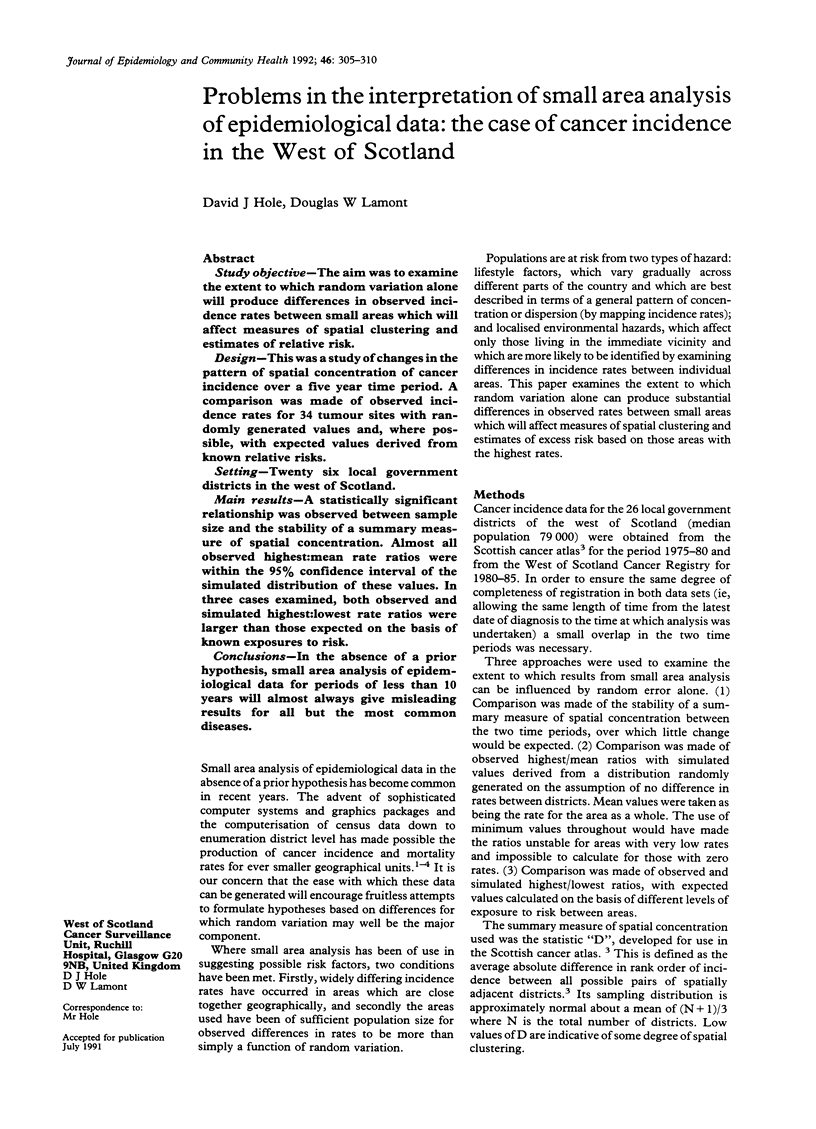
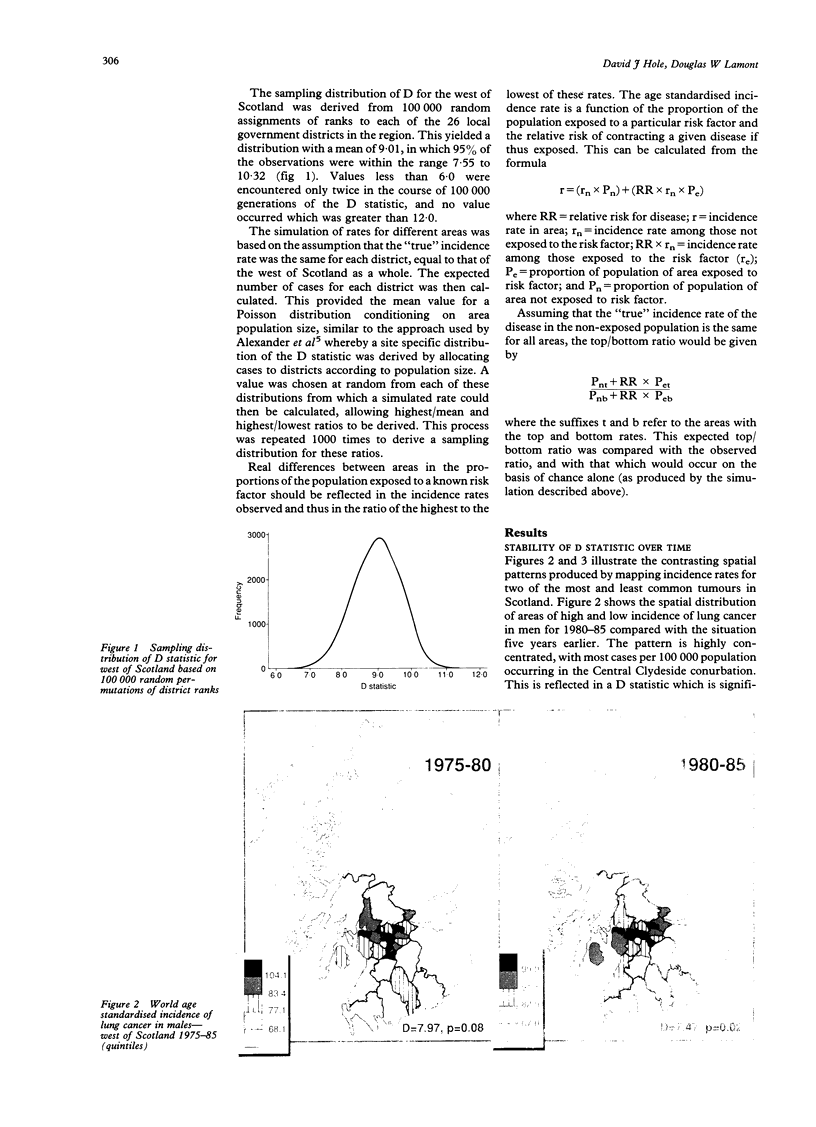
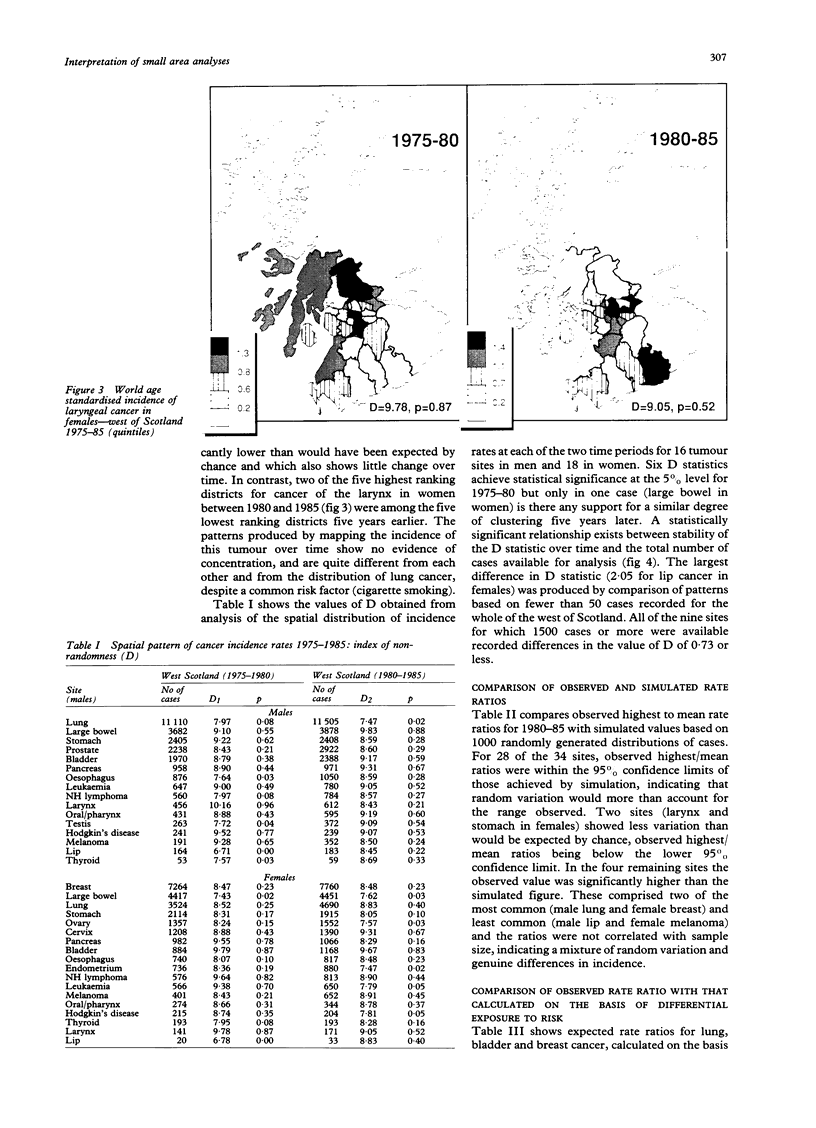
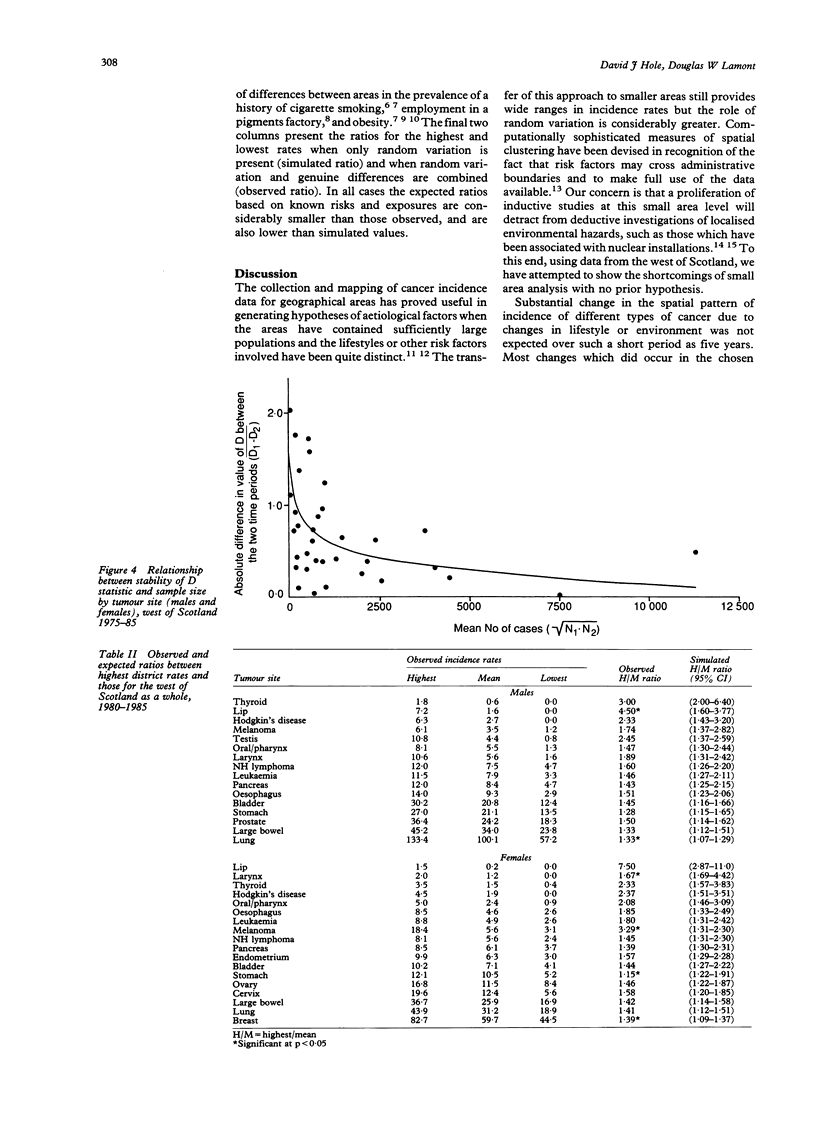
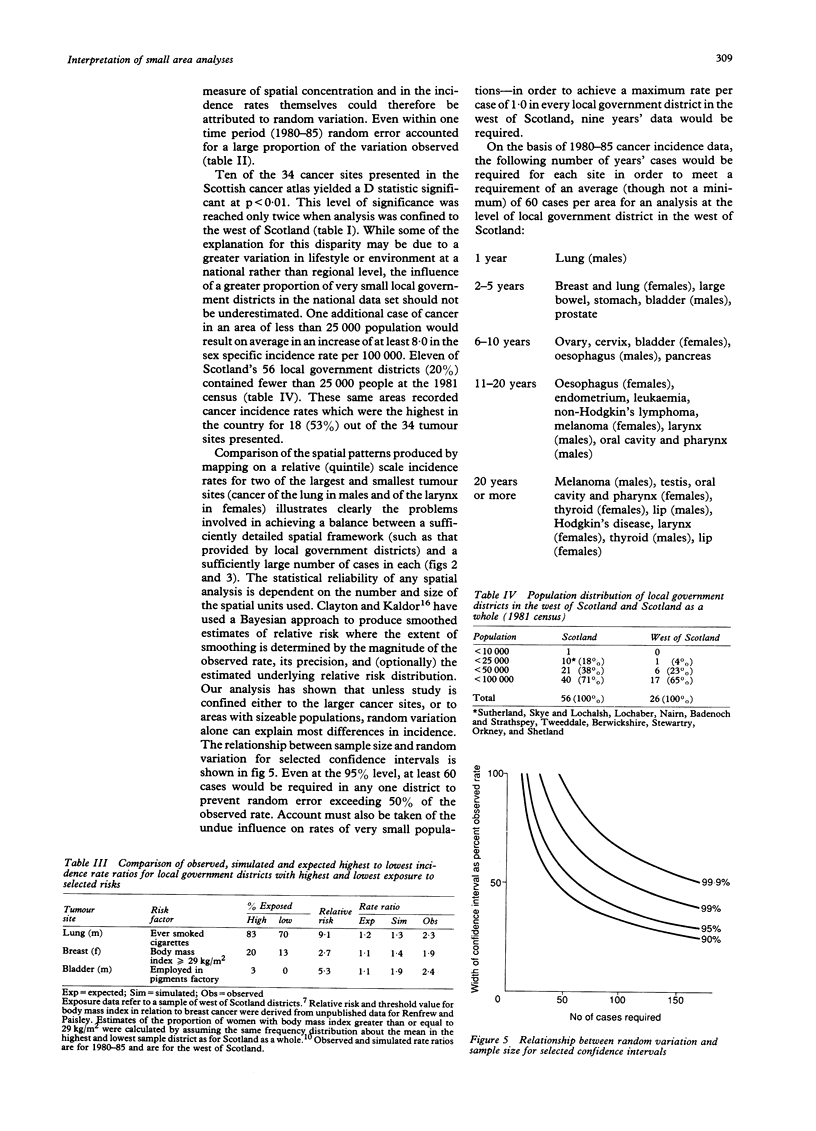
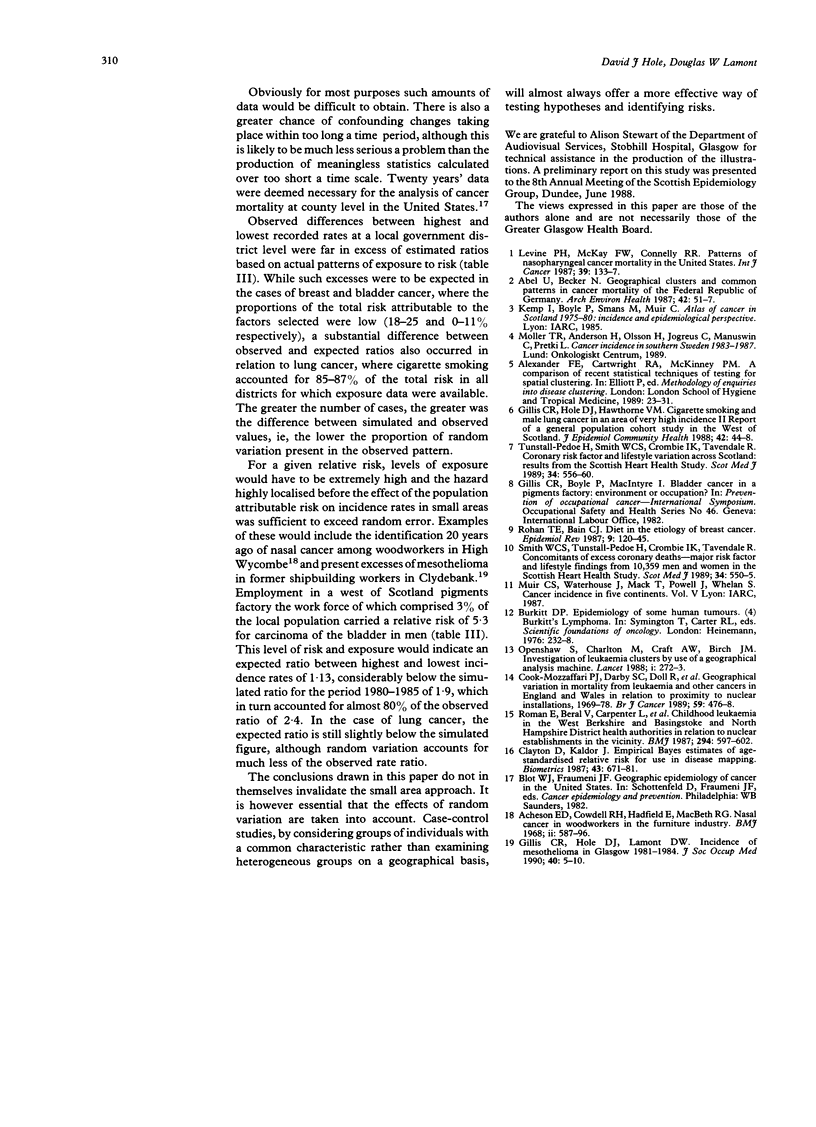
Images in this article
Selected References
These references are in PubMed. This may not be the complete list of references from this article.
- Abel U., Becker N. Geographical clusters and common patterns in cancer mortality of the Federal Republic of Germany. Arch Environ Health. 1987 Jan-Feb;42(1):51–57. doi: 10.1080/00039896.1987.9935795. [DOI] [PubMed] [Google Scholar]
- Acheson E. D., Cowdell R. H., Hadfield E., Macbeth R. G. Nasal cancer in woodworkers in the furniture industry. Br Med J. 1968 Jun 8;2(5605):587–596. doi: 10.1136/bmj.2.5605.587. [DOI] [PMC free article] [PubMed] [Google Scholar]
- Clayton D., Kaldor J. Empirical Bayes estimates of age-standardized relative risks for use in disease mapping. Biometrics. 1987 Sep;43(3):671–681. [PubMed] [Google Scholar]
- Cook-Mozaffari P. J., Darby S. C., Doll R., Forman D., Hermon C., Pike M. C., Vincent T. Geographical variation in mortality from leukaemia and other cancers in England and Wales in relation to proximity to nuclear installations, 1969-78. Br J Cancer. 1989 Mar;59(3):476–485. doi: 10.1038/bjc.1989.99. [DOI] [PMC free article] [PubMed] [Google Scholar]
- Gillis C. R., Hole D. J., Lamont D. W. Incidence of mesothelioma in Glasgow 1981-1984. J Soc Occup Med. 1990 Spring;40(1):5–10. doi: 10.1093/occmed/40.1.5. [DOI] [PubMed] [Google Scholar]
- Levine P. H., McKay F. W., Connelly R. R. Patterns of nasopharyngeal cancer mortality in the United States. Int J Cancer. 1987 Feb 15;39(2):133–137. doi: 10.1002/ijc.2910390202. [DOI] [PubMed] [Google Scholar]
- Openshaw S., Craft A. W., Charlton M., Birch J. M. Investigation of leukaemia clusters by use of a Geographical Analysis Machine. Lancet. 1988 Feb 6;1(8580):272–273. doi: 10.1016/s0140-6736(88)90352-2. [DOI] [PubMed] [Google Scholar]
- Rohan T. E., Bain C. J. Diet in the etiology of breast cancer. Epidemiol Rev. 1987;9:120–145. doi: 10.1093/oxfordjournals.epirev.a036299. [DOI] [PubMed] [Google Scholar]
- Roman E., Beral V., Carpenter L., Watson A., Barton C., Ryder H., Aston D. L. Childhood leukaemia in the West Berkshire and Basingstoke and North Hampshire District Health Authorities in relation to nuclear establishments in the vicinity. Br Med J (Clin Res Ed) 1987 Mar 7;294(6572):597–602. doi: 10.1136/bmj.294.6572.597. [DOI] [PMC free article] [PubMed] [Google Scholar]
- Smith W. C., Tunstall-Pedoe H., Crombie I. K., Tavendale R. Concomitants of excess coronary deaths--major risk factor and lifestyle findings from 10,359 men and women in the Scottish Heart Health Study. Scott Med J. 1989 Dec;34(6):550–555. doi: 10.1177/003693308903400603. [DOI] [PubMed] [Google Scholar]
- Tunstall-Pedoe H., Smith W. C., Crombie I. K., Tavendale R. Coronary risk factor and lifestyle variation across Scotland: results from the Scottish Heart Health Study. Scott Med J. 1989 Dec;34(6):556–560. doi: 10.1177/003693308903400604. [DOI] [PubMed] [Google Scholar]




